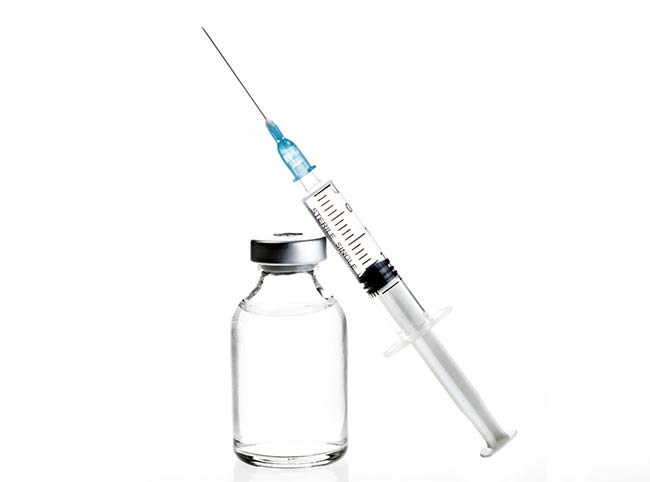Overactive bladder (OAB) is a condition characterized by urinary urgency, frequency with or without incontinence, and is often treated with a combination of behavioral therapy, pelvic floor exercises and/or pharmacotherapy. A variety of oral pharmacological drugs and the ability to increase the dose of these drugs (titrate) provide considerable options and flexibility. However, many patients will ultimately fail such therapy. Few options exist for these refractory patients with a condition that can greatly affect quality of life. Sacral neuromodulation (SNM) and posterior tibial nerve stimulation (PTNS) have been utilized with some success. PTNS requires patients to come to the office a minimum of 12 times over the course of therapy to optimize effects. SNM requires surgery.
OnobotulinumtoxinA is another option. Better known as Botox® (Allergan, Irvine, CA) OnobotulinumtoxinA is the only botulinum toxin currently available and approved for use in the urinary tract in the US. It is administered using a telescope (cystoscopically) through the urethra, as an intravesical injection using a needle placed through either a flexible or rigid cystoscope. This is most often done as an office based procedure without general or regional anesthesia. After being administered, the therapy takes about three to ten days to take effect, and may last up to six to nine months, after which time a repeat injection is needed to maintain the effect.
The exact mechanism by which onobotulinumtoxinA exerts its favorable effects is unclear but it is likely related to relaxation of the bladder muscle (detrusor) as well as perhaps some effects on sensation relating to a decreased sense of urgency to urinate. At least in part, its effects are mediated via blockade of a neurotransmitter called acetylcholine and perhaps other peptides as well. [1].
Several publications have demonstrated the utility of onobotulinumtoxinA in many thousands of patients. (2-6). Success rates in reducing urinary incontinence, urinary urgency and frequency vary from 60-80%. The major side effects of Botox include urinary tract infection and difficulty urinating after injection.
Overall, Botox is an exciting advance in the treatment of OAB and urinary incontinence. There continues to be active research on this medication including improved dosing, and alternative methods of delivering the medication without requiring injection needles.
- Kalsi V, Apostolidis A; Gonzales G; Elneil, S; Dasgupta P; Fowler, CJ: Early effect on the overactive bladder symptoms following botulinum neurotoxin type A injections for detrusor overactivity. European urology 2008, 54(1):181-187.
- Cruz F, Herschorn S, Aliotta P, Brin M, Thompson C, Lam W, Daniell G, Heesakkers J, Haag-Molkenteller C: Efficacy and safety of onabotulinumtoxinA in patients with urinary incontinence due to neurogenic detrusor overactivity: a randomised, double-blind, placebo-controlled trial. European urology 2011, 60(4):742-750.
- Herschorn S, Gajewski J, Ethans K, Corcos J, Carlson K, Bailly G, Bard R, Valiquette L, Baverstock R, Carr L et al: Efficacy of botulinum toxin A injection for neurogenic detrusor overactivity and urinary incontinence: a randomized, double-blind trial. The Journal of urology 2011, 185(6):2229-2235.
- Rovner E, Kennelly M, Schulte-Baukloh H, Zhou J, Haag-Molkenteller C, Dasgupta P: Urodynamic results and clinical outcomes with intradetrusor injections of onabotulinumtoxinA in a randomized, placebo-controlled dose-finding study in idiopathic overactive bladder. Neurourology and urodynamics 2011, 30(4):556-562.
- Denys P, Le Normand L, Ghout I, Costa P, Chartier-Kastler E, Grise P, Hermieu JF, Amarenco G, Karsenty G, Saussine C et al: Efficacy and safety of low doses of onabotulinumtoxinA for the treatment of refractory idiopathic overactive bladder: a multicentre, double-blind, randomised, placebo-controlled dose-ranging study. European urology 2012, 61(3):520-529.
- Dmochowski R, Chapple C, Nitti VW, Chancellor M, Everaert K, Thompson C, Daniell G, Zhou J, Haag-Molkenteller C: Efficacy and safety of onabotulinumtoxinA for idiopathic overactive bladder: a double-blind, placebo controlled, randomized, dose ranging trial. The Journal of urology 2010,184(6):2416-2422.
- Grosse J, Kramer G, Stohrer M: Success of repeat detrusor injections of botulinum a toxin in patients with severe neurogenic detrusor overactivity and incontinence. European urology 2005, 47(5):653-659.







